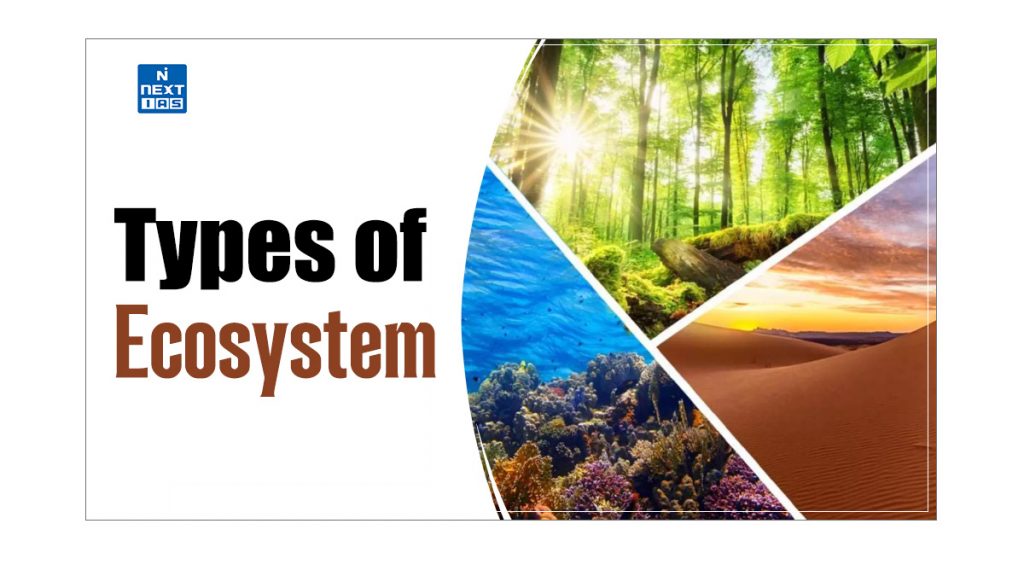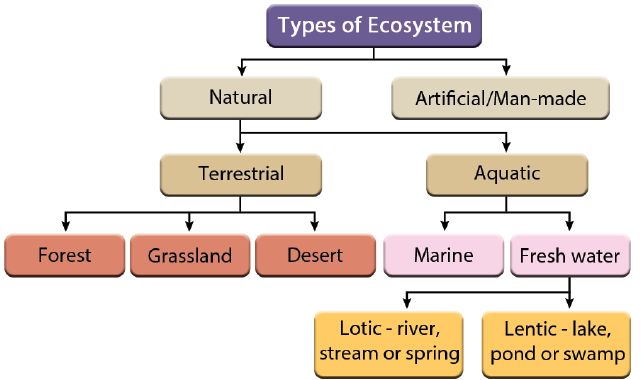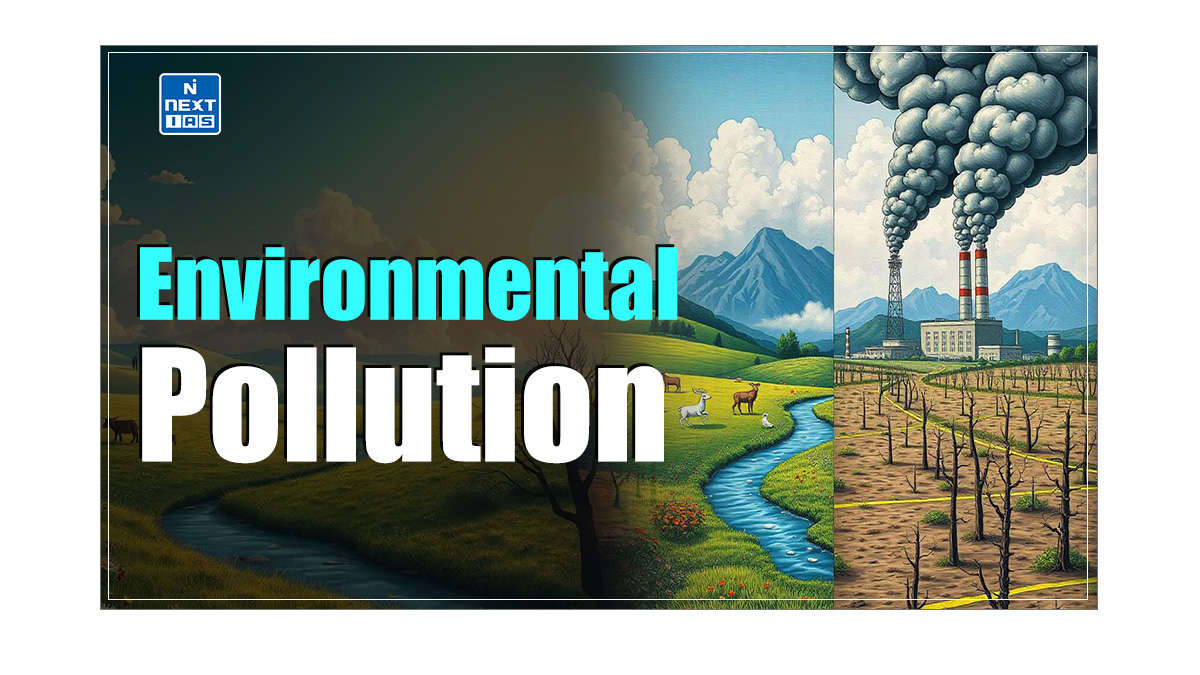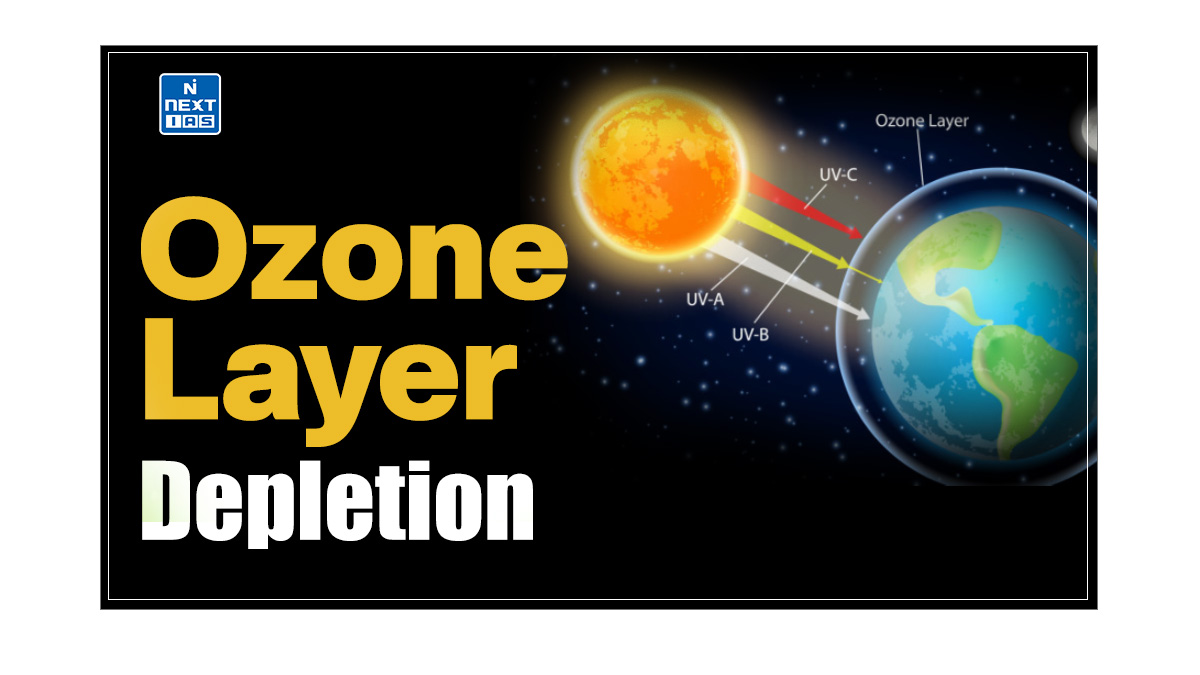
Understanding the different types of ecosystem is crucial for gaining insights into the diversity of life on Earth and the various ecological processes that sustain it. This article aims to study in detail various types of ecosystem, including terrestrial ecosystems, and aquatic ecosystems, among others.
What is Ecosystem?
- An ecosystem is a functional unit of nature where a community of living organisms interact among themselves and with the surrounding physical environment.
- An Ecosystem varies greatly in size and may be as large as a forest or sea or as small as a small fishpond, which provides a home for plants and other small animals.
Read our detailed article on the Basic Concepts of Ecosystem.
Types of Ecosystem
Based on their environment, Ecosystems can be broadly classified into the following main categories and sub-categories:

Each of these types of ecosystem has been discussed in detail in the sections that follow.
Natural Ecosystem
- A Natural Ecosystem is a community of living and non-living organisms where each component interacts together as a unit through biological, physical and chemical processes.
- The key characterictic of natural ecosystems is that they are purely natural, meaning that their formations and functioning are not influenced by any human intervention.
- It is solely powered by the solar energy.
- For example, forests, grasslands, and an estuary ecosystem.
- In natural ecosystems, genetic diversity is greater, and thus they are more stable than man-made ecosystems.
- Natural Ecosystems are of two types: Terrestrial Ecosystems and Aquatic Ecosystems.
Terrestrial Ecosystem
- Terrestrial ecosystems are those ecosystems that are found on the land, i.e. the interactions between the living and the non-living parts of an ecosystem take place on the land masses.
- Major terrestrial ecosystems are of four types – Forest Ecosystems, Grassland Ecosystems, Desert Ecosystems, and Tundra Ecosystems.
Read our detailed article on Terrestrial Ecosystems.
Aquatic Ecosystems
- An aquatic ecosystem is an ecosystem where interactions among the different organisms and their environment take place in water bodies.
- Based on the salinity levels, aquatic ecosystems can again be classified into two categories: Freshwater Ecosystems and Marine Ecosystems.
Read our detailed article on Aquatic Ecosystems.
Human Modified Ecosystems
- Over the period of time, Human beings have modified and changed the natural ecosystem in response to the increasing human population, increasing human needs and changing lifestyles.
- These ecosystems differ from the natural ecosystems as human-modified ones may or may not depend on solar energy for survival, growth and stability.
- For example, in an industry, fossil fuel or electricity is used to derive energy.
Agro-ecosystems
- An ecosystem designed for agricultural use is called Agroecosystems.
- These are practiced mainly in areas endowed with good quality of soil. Here Commercial Crop plants are sown and harvested by humans for economic purposes.
- For this reason, they are also known as the Crop-ecosystems, where monoculture is mostly practised.
Plantation Forests
Plantation forests are man-made ecosystems, a type of managed ecosystems in which the trees of a particular species are planted on barren land, private land, village panchayat land, roadsides, canal banks, along with railway line and on land not suitable for agriculture.
Dams and Reservoirs
- A reservoir is mainly a man-made water body formed by the construction of a dam, a barrier constructed to stop or restrict the flow of water and a reservoir.
- They are created for many purposes.
- Irrigation is by far the most common purpose of dams.
- Other purposes include the production of electricity (Hydropower generation), water supply, flood control, recreation, navigation and fish farming.
Aquaculture
- Aquaculture is an industrial process of raising aquatic organisms up to final commercial production within properly partitioned aquatic areas, controlling the environmental factors and administering the life history of the organism positively.
- It is primarily done to cultivate certain commercially important edible species of fresh and marine water fishes, molluscs, crustaceans, aquatic plants, etc.
- Other purposes include affordable sources of protein-rich diet, recreational values, aesthetic values etc.
- Fisheries and aquaculture differ when it comes to methods as fisheries include extraction of food from the sea and the freshwater, whereas aquaculture stands for the rearing of aquatic organisms in artificially made water bodies.
Conclusion
In conclusion, the diverse types of ecosystems illustrate the complexity and richness of our planet. Each ecosystem, with its unique combination of biotic and abiotic components, plays a critical role in maintaining ecological balance and supporting life.
Frequently Asked Questions (FAQs)
How many types of ecosystems are there?
Ecosystems have been broadly classified into two types – Man-made Ecosystems and Natural Ecosystems. The Natural Ecosystems have been further subdivided into two types – Terrestrial Ecosystems and Aquatic Ecosystems.
What are the two types of ecosystem?
The two broder types of ecosystems are – Man-made ecosystems and natural ecosystems.
How many types of aquatic ecosystems are there?
Aquatic ecosystems are broadly categorized into types – Freshwater Ecosystems and Marine Ecosystems.






